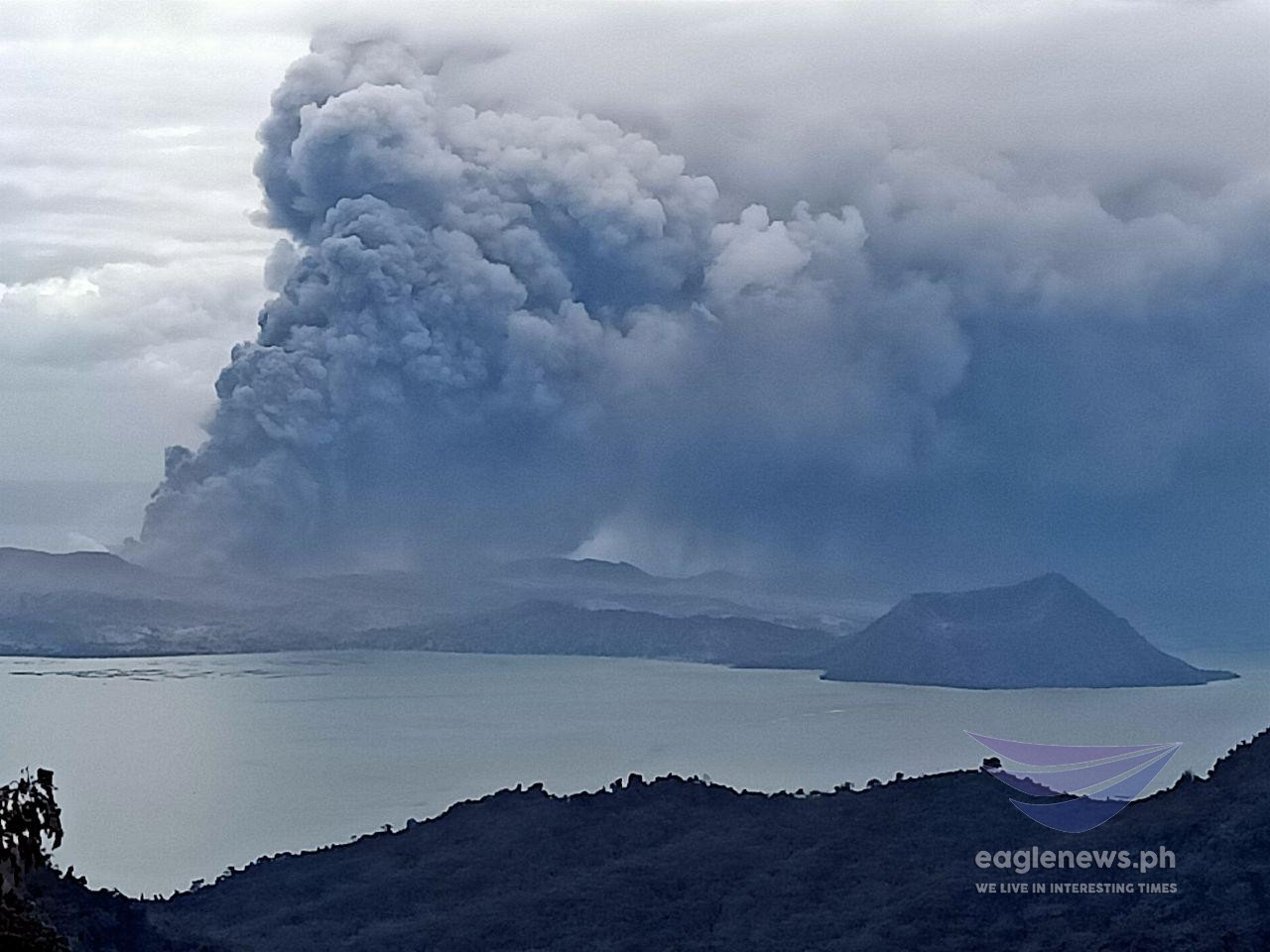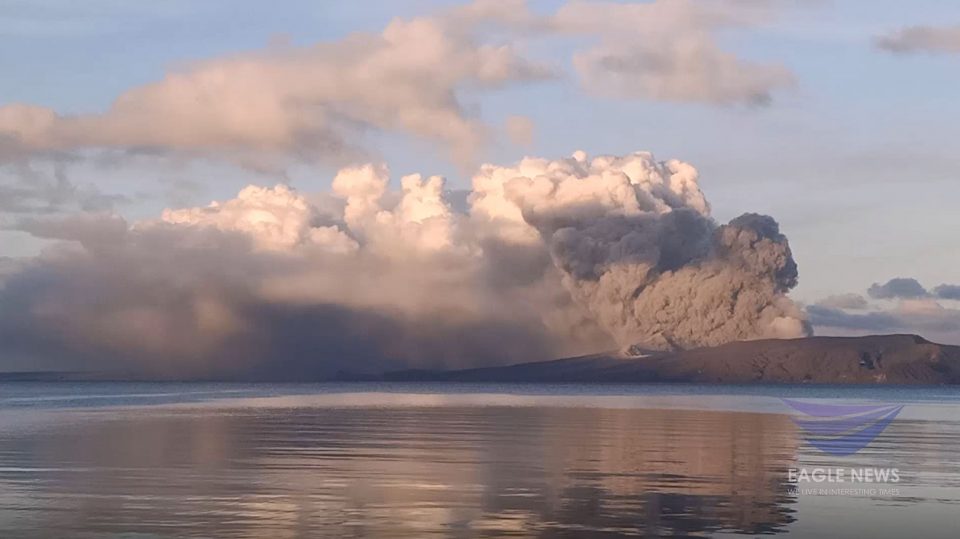
(Eagle News) – Taal Volcano’s main crater has exhibited “continuous eruption” for the past 24 hours that created fountains of lava as high as 500 meters and about two kilometers of dark gray steam plumes.
This was according to the 8.m. Taal Volcano bulletin of the Philippine Institute of Volcanology and Seismology (PHIVOLCS) issued on Tuesday, Jan. 14, which also noted “flashes of volcanic lighting” at the base of the plumes.
“For the past 24 hours, Taal Volcano’s activity has been characterized by continuous eruption of the Main Crater due to magmatic and hydrovolcanic activity,” the bulletin said.
“This ongoing eruption generated 500-meter tall lava fountains topped by dark gray steam-laden plumes reaching approximately 2 kilometers tall that dispersed ash to the southwest and west of the Main Crater.”
It said that the “flashes of volcanic lightning were observed at the base of the degassing plumes this morning.”
PHIVOLCS even monitored new vents that had opened up in Taal volcano as it continued its intense volcanic activities.
“New vents opened up on the northern flank where short 500-meter lava fountains, and within the main crater where steam plumes, have emanated,” its 8 a.m. bulletin said.

Video taken early morning of Jan. 14, 2020, before 7 a.m., as Taal Volcano exhibited “continuous eruption”. Phivolcs, in its 8 a.m. bulletin issued on Jan. 14, 2020 said that “for the past 24 hours, Taal Volcano’s activity has been characterized by continuous eruption of the Main Crater due to magmatic and hydrovolcanic activity.” (Eagle News Service)
Heavy ashfall have fallen on the towns of of Lemery, Talisay, Taal, and Cuenca in Batangas, it said, since PHIVOLCS last update issued at 4 p.m. on Monday.
The Philippine Seismic Network has also recorded a total of 212 volcanic earthquakes in Taal region as of 2 a.m. Tuesday, Jan. 14.
PHOVOLCS said that 81 of these quakes were felt with intensities ranging from 1 to 6 in Tagaytay City, Cavite.
“Such intense seismic activity probably signifies continuous magmatic intrusion beneath the Taal edifice, which may lead to further eruptive activity,” it warned.
Sulfur dioxide (SO2) emission was a;sp measured at an average of 5299 tons/day on Monday, Jan. 13.
Alert Level 4 is still in effect over Taal Volcano, which means that “hazardous explosive eruption is possible within hours to days,” said PHIVOLCS.
It again strongly reiterated the need for “total evacuation of Taal Volcano Island and areas at high risk to pyroclastic density currents and volcanic tsunami within a 14-kilometer radius from Taal Main Crater.”
“Areas in the general north of Taal Volcano are advised to guard against the effects of heavy and prolonged ashfall,” the PHIVOLCS bulletin said.
“Civil aviation authorities must advise aircraft to avoid the airspace around Taal Volcano as airborne ash and ballistic fragments from the eruption column pose hazards to aircraft,” it added.







